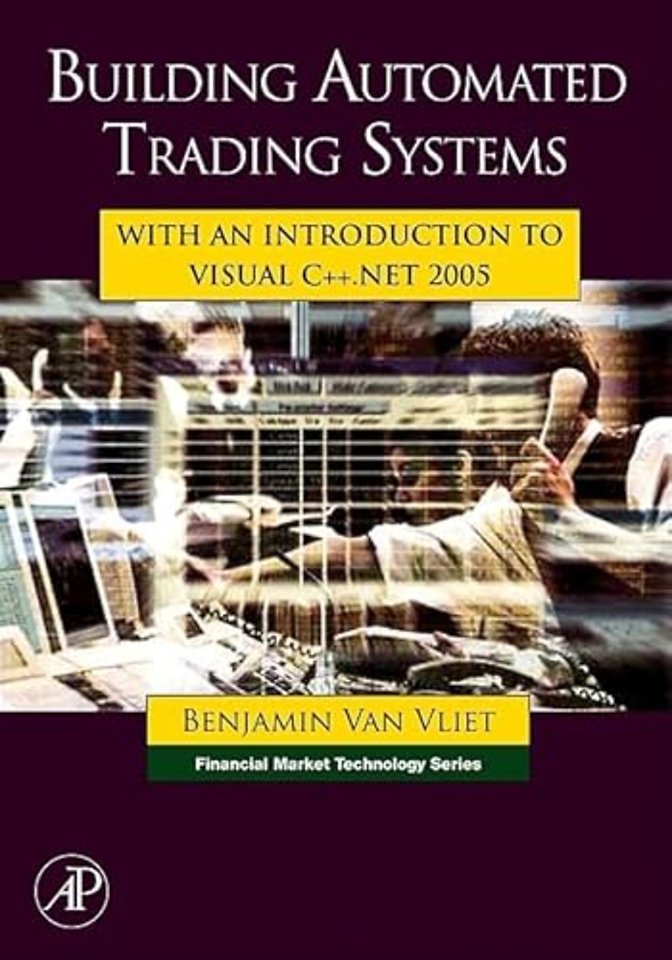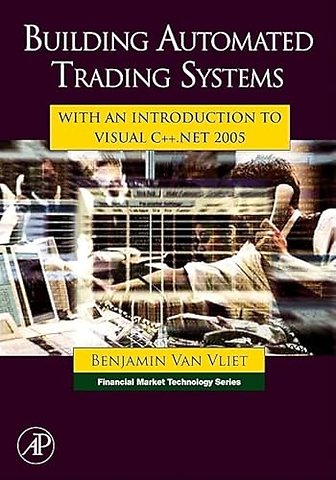Building Automated Trading Systems
With an Introduction to Visual C++.NET 2005
Gebonden Engels 2007 9780750682510Samenvatting
Over the next few years, the proprietary trading and hedge fund industries will migrate largely to automated trade selection and execution systems. Indeed, this is already happening. While several finance books provide C++ code for pricing derivatives and performing numerical calculations, none approaches the topic from a system design perspective. This book will be divided into two sections: programming techniques and automated trading system ( ATS ) technology and teach financial system design and development from the absolute ground up using Microsoft Visual C++.NET 2005. MS Visual C++.NET 2005 has been chosen as the implementation language primarily because most trading firms and large banks have developed and continue to develop their proprietary algorithms in ISO C++ and Visual C++.NET provides the greatest flexibility for incorporating these legacy algorithms into working systems. Furthermore, the .NET Framework and development environment provide the best libraries and tools for rapid development of trading systems.
The first section of the book explains Visual C++.NET 2005 in detail and focuses on the required programming knowledge for automated trading system development, including object oriented design, delegates and events, enumerations, random number generation, timing and timer objects, and data management with STL.NET and .NET collections. Furthermore, since most legacy code and modeling code in the financial markets is done in ISO C++, this book looks in depth at several advanced topics relating to managed/unmanaged/COM memory management and interoperability. Further, this book provides dozens of examples illustrating the use of database connectivity with ADO.NET and an extensive treatment of SQL and FIX and XML/FIXML. Advanced programming topics such as threading, sockets, as well as using C++.NET to connect to Excel are also discussed at length and supported by examples.
The second section of the book explains technological concerns and design concepts for automated trading systems. Specifically, chapters are devoted to handling real-time data feeds, managing orders in the exchange order book, position selection, and risk management. A .dll is included in the book that will emulate connection to a widely used industry API ( Trading Technologies, Inc.’s XTAPI ) and provide ways to test position and order management algorithms. Design patterns are presented for market taking systems based upon technical analysis as well as for market making systems using intermarket spreads. As all of the chapters revolve around computer programming for financial engineering and trading system development, this book will educate traders, financial engineers, quantitative analysts, students of quantitative finance and even experienced programmers on technological issues that revolve around development of financial applications in a Microsoft environment and the construction and implementation of real-time trading systems and tools.
Specificaties
Lezersrecensies
Inhoudsopgave
Anderen die dit kochten, kochten ook
Rubrieken
- advisering
- algemeen management
- coaching en trainen
- communicatie en media
- economie
- financieel management
- inkoop en logistiek
- internet en social media
- it-management / ict
- juridisch
- leiderschap
- marketing
- mens en maatschappij
- non-profit
- ondernemen
- organisatiekunde
- personal finance
- personeelsmanagement
- persoonlijke effectiviteit
- projectmanagement
- psychologie
- reclame en verkoop
- strategisch management
- verandermanagement
- werk en loopbaan







